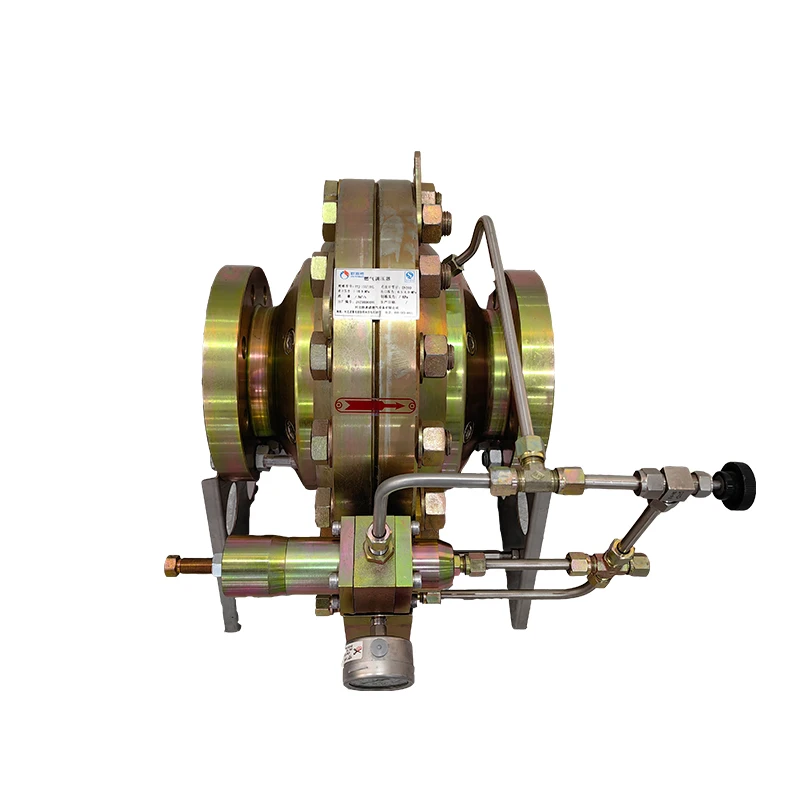
Dec . 04, 2024 16:24
Back to list
مبادل حراري للغاز
Understanding Gas Heat Exchangers Principles and Applications
A gas heat exchanger is a critical component in various industries, designed to transfer heat between two or more fluids without mixing them. This process is essential for improving energy efficiency, reducing operational costs, and enhancing system performance in applications ranging from power generation to HVAC systems.
Principles of Heat Exchange
At the core of any heat exchanger, including gas heat exchangers, is the principle of thermodynamics, particularly the second law, which states that heat naturally flows from a hotter body to a cooler one. Heat exchangers are designed to facilitate this transfer efficiently. In a typical gas heat exchanger, hot gas flows through one set of tubes or channels, while cooler gas passes through another, often in a counterflow or crossflow arrangement.
The counterflow design, where the two gases move in opposite directions, is widely regarded as the most efficient because it maintains a higher temperature gradient between the two streams over the length of the exchanger. This gradient is crucial for maximizing heat transfer, resulting in lower energy consumption and improved overall efficiency.
Types of Gas Heat Exchangers
There are various types of gas heat exchangers, each suitable for different applications. Some common types include
1. Shell and Tube Heat Exchangers These consist of a series of tubes housed within a shell. One fluid flows through the tubes, and another fluid flows around them, allowing for efficient heat transfer.
.
3. Air-to-Air Heat Exchangers These are often used in HVAC systems to recover heat from exhaust air to preheat incoming fresh air, thereby improving energy efficiency in buildings.
مبادل حراري للغاز

4. Regenerative Heat Exchangers These temporarily store heat from the hot gas and release it to the cooler gas, maximizing energy recovery in applications like gas turbines.
Applications of Gas Heat Exchangers
Gas heat exchangers are widely used in various industries due to their versatile applications. In power generation, they are essential for waste heat recovery, allowing power plants to capture and utilize heat that would otherwise be lost. For instance, in combined cycle gas turbine (CCGT) plants, gas heat exchangers help improve the overall efficiency of electricity generation.
In manufacturing, these devices play a crucial role in processes requiring temperature control, such as in chemical production or metal fabrication. In HVAC systems, they facilitate energy recovery, reducing the demand for heating and cooling and, consequently, the environmental impact of buildings.
Benefits of Gas Heat Exchangers
The primary advantage of gas heat exchangers lies in their ability to enhance energy efficiency. By recovering and reusing heat, industries can significantly decrease fuel consumption and reduce greenhouse gas emissions. Additionally, these heat exchangers can help maintain optimal operating temperatures, improving the lifespan of equipment and minimizing maintenance costs.
Moreover, advancements in materials and technology have led to the development of more compact and efficient designs, enabling industries to implement heat exchangers in a wider variety of applications. As the push for sustainability increases, the importance of gas heat exchangers in energy management and environmental stewardship will continue to grow.
Conclusion
Gas heat exchangers are vital components that play a significant role in enhancing energy efficiency across many sectors. By understanding their principles, types, and applications, industries can better harness these devices to optimize performance, reduce costs, and contribute to more sustainable practices. As technology evolves, the future of gas heat exchangers looks promising, paving the way for even more innovative applications and improved energy management strategies.
Next:
Latest news
-
Safety Valve Spring-Loaded Design Overpressure ProtectionNewsJul.25,2025
-
Precision Voltage Regulator AC5 Accuracy Grade PerformanceNewsJul.25,2025
-
Natural Gas Pressure Regulating Skid Industrial Pipeline ApplicationsNewsJul.25,2025
-
Natural Gas Filter Stainless Steel Mesh Element DesignNewsJul.25,2025
-
Gas Pressure Regulator Valve Direct-Acting Spring-Loaded DesignNewsJul.25,2025
-
Decompression Equipment Multi-Stage Heat Exchange System DesignNewsJul.25,2025

